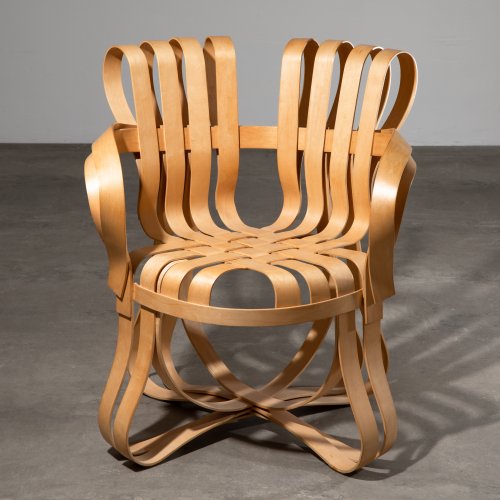Biography
Although best known for his imposing architectural buildings - the Vitra Design Museum (1989), the Guggenheim Museum (1997) in Bilbao, Spain, or the Foundation Louis Vuitton in the Bois de Boulogne in Paris (2014) - Frank Owen Gehry has also made a great name for himself in furniture design. Born Frank Goldberg in Toronto in 1929, he studied at the University of Southern California and the Harvard Graduate School of Design, which was followed by various jobs in architecture firms in Los Angeles, Atlanta, Boston and Paris. Gehry went into business for himself in 1962 with Frank O. Gehry & Associates Inc. but returned to his home university in California several times between 1972 and 1989 as an assistant professor. During the 1970s, he designed office buildings and residential buildings in what he called his "punk design" style, but increasingly devoted himself to architecture for museums in North America, South America, Europe and Asia. His complex, experimental and sometimes almost "choppy" architectural language is characteristic of this style, making him one of the most important deconstructivist architects of postmodernism.
Until the 1980s, design had no special place in Gehry's work; his first furniture designs were more like an "intermezzo", as Frank O. Gehry stopped production again after only three months (despite high demand). His fear that this success would damage or overshadow his good reputation as an architect was too great. As in architecture, he also broke new aesthetic ground in furniture design and experimented with materials such as corrugated cardboard, for example in the Wiggle Side Chair or the Low Table Set from the Easy Edges series (1971-72).
In the 1980s, the architect returned to furniture design. His best-known designs include the chair series Experimental Edge (1982), also made of cardboard glued together, and Power Play (1992), which he designed for Knoll International. The latter requires a complex manufacturing process that laminates strips of wood veneer on seven to nine layers with high-strength urea glue.
To date, he has received over 90 awards and honorary memberships, including the Pritzker Architecture Prize (1989), the Dorothy and Lillian Gish Prize (1994) and the US Presidential Medal of Freedom (2016).
Objects by Frank O. Gehry
-

Frank O. Gehry Knoll International
Armchair model Cross Check + catalog + tie
Estimate: 700 € - 1,400 €
